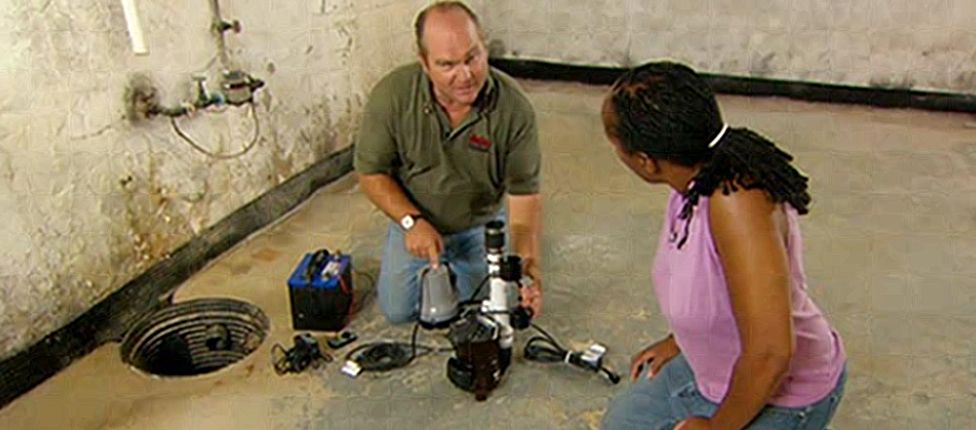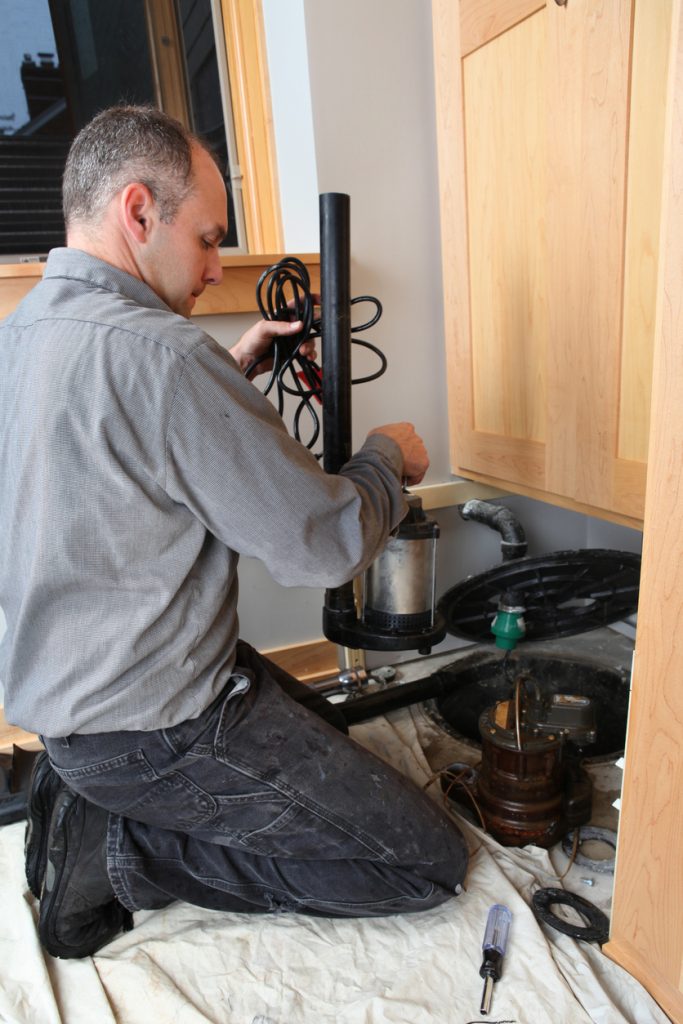What're your beliefs on How to Care for Your Sump Pump?

Sump pumps are critical parts in several homes, specifically in areas vulnerable to flooding or excessive moisture. They aid avoid water damage by efficiently eliminating excess water from basements or crawl spaces. However, like any other appliance, sump pumps call for normal maintenance to ensure they operate properly when needed one of the most. Cleansing your sump pump is a vital part of its maintenance, and recognizing just how to do it effectively can save you from expensive fixings and potential catastrophes.
Intro
Maintaining a clean sump pump is crucial for its correct performance and long life. Overlooking this vital job can lead to blockages, breakdowns, and eventually, water damages to your residential or commercial property. Therefore, learning exactly how to clean a sump pump is important for property owners who rely on these gadgets to maintain their basements dry and secured.
Signs of a Dirty Sump Pump
Knowing when your sump pump needs cleansing is important for protecting against potential breakdowns. Some common indicators that show an unclean sump pump consist of strange noises throughout procedure, minimized water flow, and noticeable particles in the pit. If you discover any one of these symptoms, it's essential to cleanse your sump pump promptly to stay clear of any more concerns.
Planning for Cleansing
Before you begin cleansing your sump pump, it's necessary to take some safety precautions. Start by shutting down the power to the pump to stay clear of any electric accidents. In addition, use suitable protective equipment, such as gloves and safety glasses, to protect yourself from dirt, debris, and potential microorganisms.
Recognizing the Sump Pump
Prior to diving into the cleansing procedure, it's necessary to have a standard understanding of exactly how a sump pump functions. Normally mounted in a pit or container listed below the cellar flooring, a sump pump includes numerous key parts, consisting of a pump, a float button, and a discharge pipeline. When water gathers in the pit, the float switch turns on the pump, which then pumps the water out with the discharge pipe, away from the building's foundation.
Detailed Overview to Cleaning a Sump Pump
Turning off the Power
Begin by separating the power supply to the sump pump to prevent any crashes while cleaning.
Checking for Proper Performance
Before reinstalling the pump, perform a fast test to make certain that the float button activates the pump correctly. Pour some water into the sump pit and observe the pump's operation. If everything is functioning appropriately, you can reconstruct the pump and reconnect the power supply.
Removing Particles and Dust
Make use of a pail or an inside story to eliminate any visible debris, dirt, or sediment from the sump pit. Dispose of the debris appropriately to avoid it from obstructing the pump or the discharge pipeline.
Cleaning the Pump and Drift Switch Over
When the pit is clear of debris, very carefully get rid of the pump from the pit. Examine the pump and the float button for any indicators of damage or wear. Utilize a soft brush or towel to clean the surfaces and get rid of any kind of accumulated grime.
Purging the System
After cleaning the pump and float switch, purge the sump pit with clean water to get rid of any kind of staying dirt or sediment. This will assist make certain that the pump operates smoothly and successfully.
Upkeep Tips to Maintain Your Sump Pump Clean
In addition to routine cleansing, there are several maintenance ideas you can follow to keep your sump pump in ideal condition:
- Regular Inspection: Examine your sump pump frequently for any indicators of wear, damage, or obstructions.
- Keeping the Surrounding Location Clean: Make Sure that the area around the sump pit is without debris, dirt, and obstructions.
- Examining the Pump Periodically: Test your sump pump occasionally by putting water into the pit and observing its operation. This will aid you determine any type of possible issues prior to they escalate.
Final thought
Cleansing your sump pump is an essential aspect of its upkeep and guarantees that it operates successfully when you need it one of the most. By complying with the actions laid out in this overview and integrating routine maintenance right into your regimen, you can expand the lifespan of your sump pump and safeguard your home from water damages.
6 STEPS ON HOW TO CLEAN A SUMP PUMP PROPERLY
UNDERSTANDING SUMP PUMPS
Your sump pump plays a crucial role in protecting your home by managing and removing excess water. It primarily functions as a “shield”, guarding your basement against the damaging effects of water accumulation. The pump is housed in a sump pit in the lowest part of your basement, and its job is to pump out any water that collects there.
During heavy rainfalls or when snow melts rapidly, water can infiltrate your basement, posing potential risks like flooding, structural damage, and harmful mold growth. Here, the sump pump springs into action, pumping out the intruding water and directing it away from your home.
SAFETY FIRST
Before cleaning, remember to prioritize safety. Disconnect the sump pump from the power source to prevent any accidental electric shocks. Also, wear sturdy gloves to protect your hands from any sharp or dirty components within the pump.
REMOVE THE SUMP PUMP
After ensuring your safety, the next step is to remove the sump pump from its pit. Doing this might require careful maneuvering as you don’t want to damage any pump components. Once removed, clean the sump pit to remove any accumulated debris or sludge.
INSPECT THE PUMP
Inspect the pump for any visible signs of wear or damage. Check the power cord, float switch, and impeller housing. If any components look worn out or damaged, consider replacing them to ensure optimal performance.
CLEAN THE PUMP
Thoroughly clean the pump with warm, soapy water. Make sure to rid it of any dirt, gravel, or other debris that might impede its performance. You can use a toothbrush to clean the small, hard-to-reach parts of the pump.
REINSTALL THE SUMP PUMP
- Reinstall the pump into the sump pit
- Make sure it’s positioned correctly to remove the water effectively
- Once it’s back in place, reconnect it to the power source
TEST THE PUMP
Finally, pour some water into the pit to ensure the pump works correctly. It should start automatically and begin pumping out the water; if it doesn’t, check the power source and the positioning of the pump.
Remember, while cleaning your sump pump is an essential part of home maintenance, hiring a professional plumber for a thorough inspection and cleaning at least once a year is also important. This will ensure that your pump is in optimal condition, ready to protect your home from potential water damage.
BEST PRACTICES FOR CLEANING SUMP PUMP DISCHARGE PIPES
- Regular Inspection: Regularly inspect your discharge pipes, especially during heavy rainfall or snowmelt periods. Look for any signs of blockage or damage. Early detection of problems can prevent serious issues down the line.
- Periodic Cleaning: Over time, sediment and debris can accumulate in the discharge pipes, impeding the flow of water. Regular cleaning helps keep the pipes clear and functioning efficiently. You can use a high-pressure water jet to effectively clean the pipes.
- Insulation During Winter: In colder climates, discharge pipes can freeze, blocking the outflow of water. Protect your discharge pipes from freezing temperatures by insulating them with foam pipe insulation. This will ensure the sump pump can continue to discharge water even in freezing conditions.
- Proper Positioning: The discharge pipe should be positioned to direct water away from your home’s foundation. Improper positioning can lead to water seeping back into the basement. Ensure the pipe is long enough and angled correctly.
- Installation of a Check Valve: A check valve prevents water from flowing back into your sump pit after the pump has pushed it out. Installing a check valve helps maintain the efficiency of your sump pump and reduces the risk of flooding.
- Minimize Pipe Turns: Every curve or turn in the discharge pipe can decrease the efficiency of water flow. By minimizing turns and bends in your discharge pipe, you can increase the efficiency of your sump pump.
https://www.fullspeedplumbing.com/how-to-clean-a-sump-pump-properly9999/

I'm very curious about Cleaning & Maintenance Tips for Your Home's Sump Pump and I hope you enjoyed the new blog posting. Sharing is good. Helping others is fun. Kudos for being here. Please come visit our blog back soon.
Top Article
Comments on “Clear Tips for Caring for Your Sump Pump”